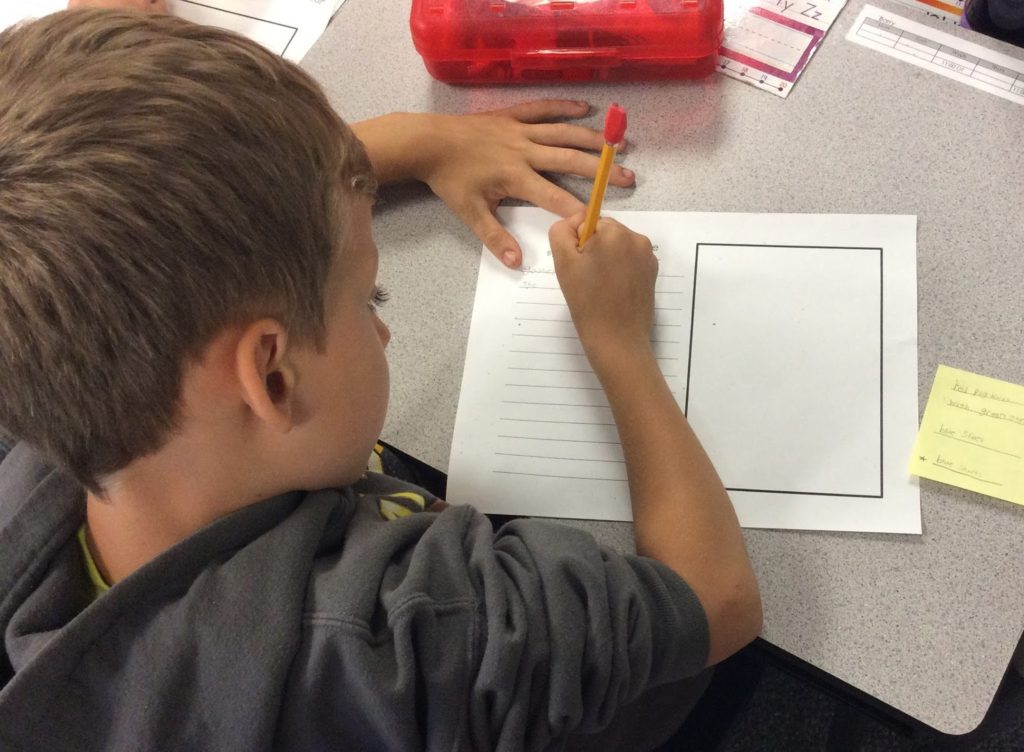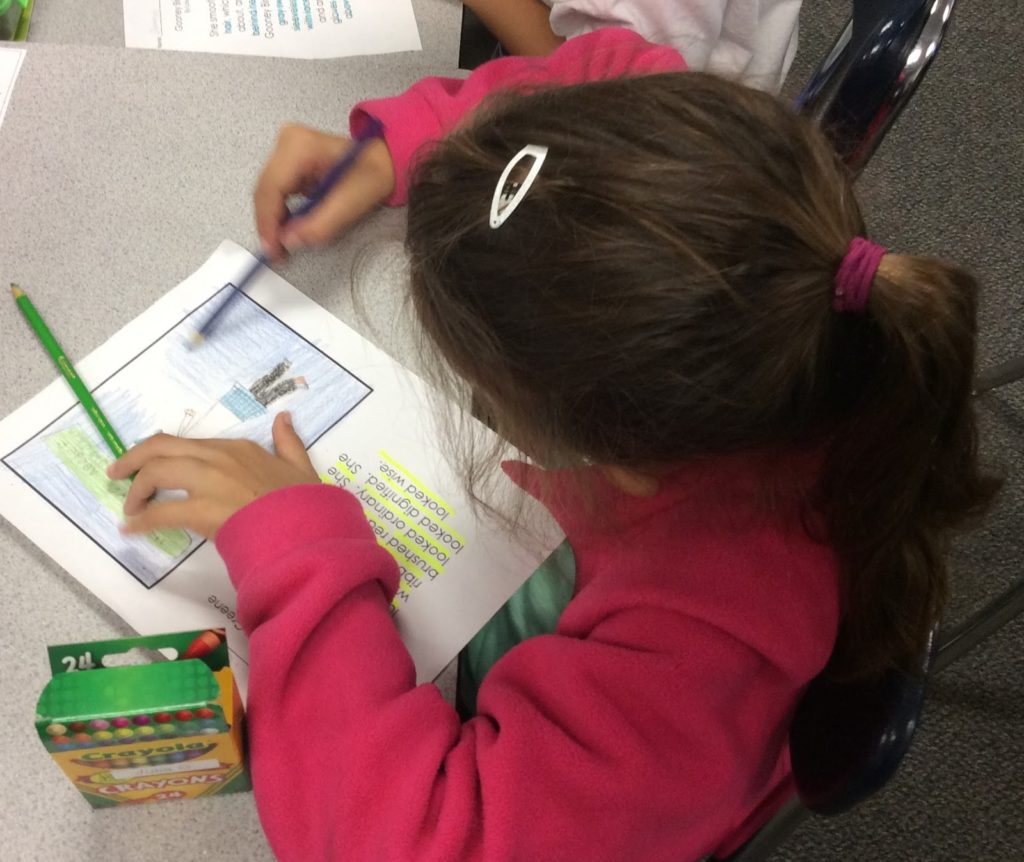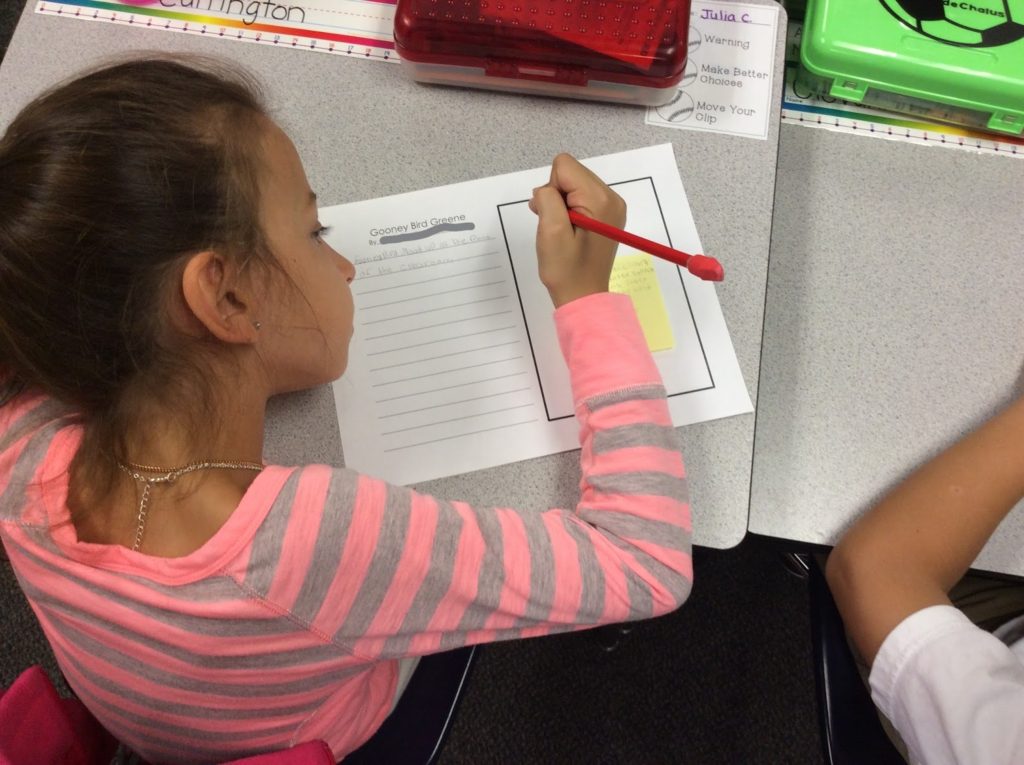I recently talked about my top 5 books to use as a read aloud, and mentioned the book Gooney Bird Greene by Lois Lowry. I use this book to help my students understand how authors add description and details to their writing. We talk about how important it is for the reader to get a picture in their head when they are reading. Gooney Bird Green is an elementary school student who is an incredible story teller who dresses very eccentrically. Lois Lowry’s descriptions of Gooney Bird allows the reader to picture exactly what she looks like.
As I read the book aloud to my class, we generate a list of page numbers that have vivid descriptions of what Gooney Bird looks like. We discuss Lois Lowry’s word choice and how that helps everyone picture exactly what Gooney Bird looks like. With the exception of the front cover, I do not share the pictures with the class as we were reading. When we finish reading the book, I type up that pages that the descriptions are on and pass them out to the
class. Get them for FREE here! Students then highlight the important nouns and adjectives that gave them a picture in their mind as I was reading. Students then use their passage to create an illustration of Gooney Bird. When everyone finishes, they meet with the other students that have the same
description and share their drawings. They are able to see that there are some striking similarities and some slight differences.

They next day, I pass out a blank sheet (similar to the description/illustration sheet) and a sticky note to each student. On the sticky note I ask them to write down their descriptions of three things:
1. A Snapshot:what Gooney Bird looks like (hair, clothes, etc)
2. A thoughtshot: what Gooney Bird might be thinking
3. A gesture: what Gooney Bird is doing with her body.
I love to reference these three things from a Nancy Boyles workshop we attended. Once they complete their sticky notes, students are then asked to write out their descriptions on the lined side of their paper.
The final step can be done one of two ways. After writing the description, students can then draw the picture they are imagining in their head. Another option would be to have students trade papers and have another student draw the picture after reading the description. This it totally up to you! These come out great and the kids are very motivated to use Lois Lowry’s writing style to come up with great descriptions. Having the support of the sticky notes proves to be really helpful for my more reluctant writers.
*I am offering the sheets that I used for these lessons FREE here!*
~Heather













